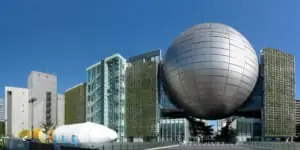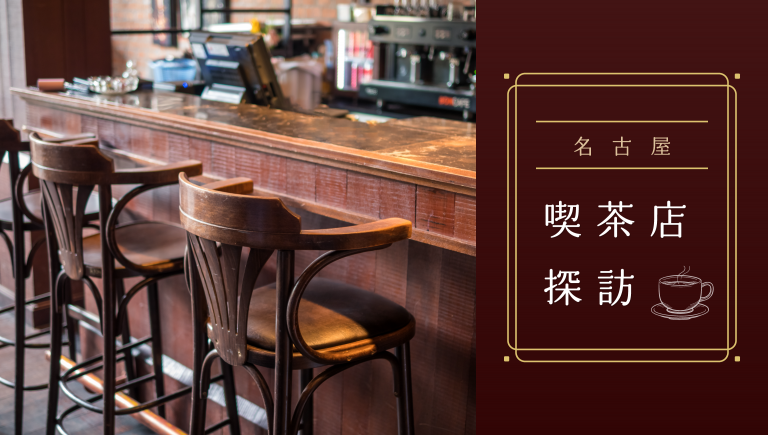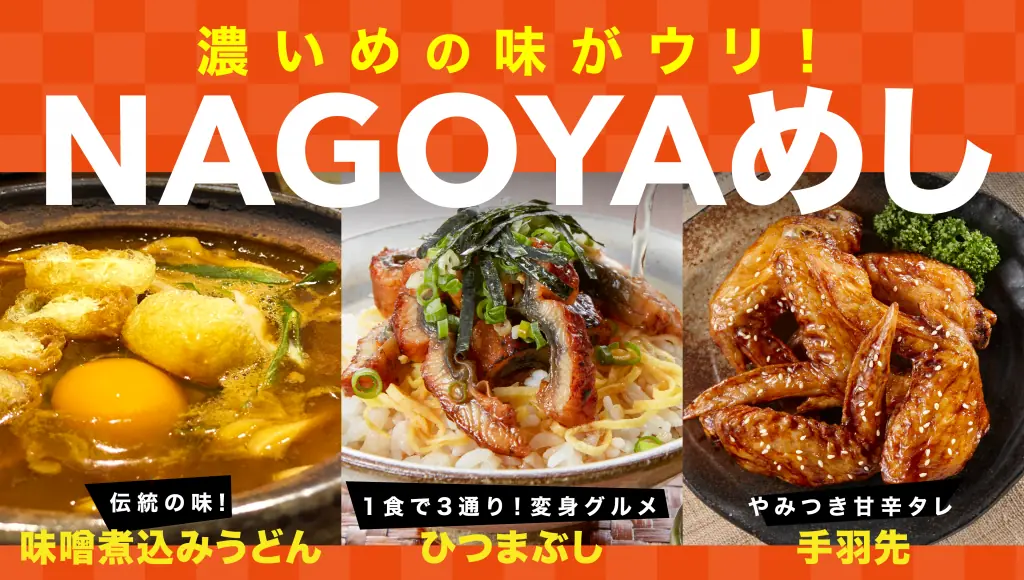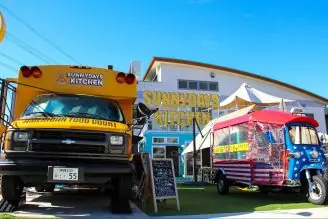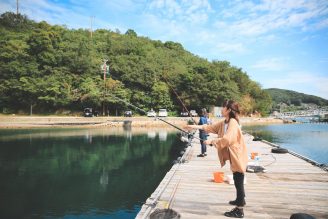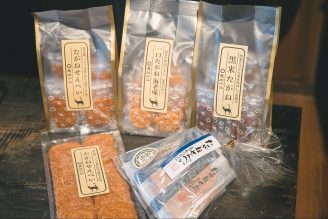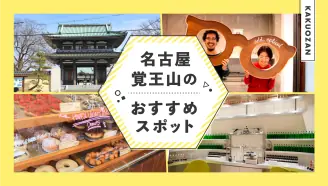日本では近年、大規模な地震が相次いでいます。今後も、日本の各地で地震が発生する可能性が指摘され、対策が積極的に進められています。また、地震だけでなく災害は、日頃の備えが何よりも大切です。
「名古屋市港防災センター」は、災害について見て学び、体験することで、どんなことに備え、何をするべきかを知ることができる名古屋市の施設です。
※情報は取材時のものです。
ご利用の際には、各施設・各店舗の最新情報をご確認ください。
目次
アクセス&利用方法は?

地下鉄「港区役所駅」1番出口からは歩いて3分。名古屋市の港区役所と隣接し、ららぽーと名古屋みなとアクルス店の目の前にあります。専用駐車場はありませんが、港区役所や港北公園の駐車場も空いていれば利用可能です。

左側の入口が、名古屋市港防災センター。港区役所と建物はつながっています。

入場、体験ともに無料。1階は主に地震について、2階は台風や津波、火災などについて体感しながら学べる空間となっています。
実際にあった大地震の波形で体験する
「地震体験室」

過去に日本で実際に起こった、濃尾地震、関東大震災、東南海地震、三河地震、阪神淡路大
震災の波形データをもとに1分間の大地震の揺れを再現した「地震体験室」。

まずは、入ってすぐの受付で申し込みます。2歳から体験できますので、ぜひ親子で体験してみましょう。(毎時00分、30分に実施)

体験の前に、スタッフの方から地震が起こったときにどう身を守るのか、また揺れがおさまった後の初期行動などについてお話を聞きます。


震度7クラスの地震を実際に体験してみると、想像以上に大きな揺れで立っていることはもちろん、座っても体を支えられないほどでした。これだけの激しい地震が、実際に起こったとは信じられないという気持ちと、もし自宅だったら……と想像するのも恐ろしくなりました。
子どもたちも、激しい揺れに耐えようと必死に体を支え、教えていただいた通りに頭と首を守る体勢を守っていました。いつもとは違う真剣な表情で、本当にこんなに揺れるの?と心から驚いている様子でした。
3Dメガネをかけて
臨場感のある音や映像で体感する「3Dシアター」

「3Dシアター」のある2階全体は、1959年(昭和34年)9月26日に上陸し、甚大な被害をもたらした伊勢湾台風に関する展示が中心で、当時を再現したレトロな雰囲気となっています。

「3Dシアター」では、伊勢湾台風についてと南海トラフ巨大地震が発生した際の津波についての2種類の映像が、時間帯に応じて上映されています。
※2階で受付が必要です。(当日先着受付順)
※12:00〜13:00はメンテナンスのため休止。

専用の3D眼鏡をかけると、立体感のある約6分間の映像が流れはじめます。今回は、伊勢湾台風がテーマの映像を鑑賞しました。

3D映像に合わせた音響や照明だけでなく、実際に風が吹いたり、ガタガタとセットの壁が揺れだしたりと臨場感たっぷりで見応えがあります。

カレンダーの日付も、伊勢湾台風が起こった1959年(昭和34年)9月26日で止まっています。

テレビやラジオなど部屋の隅々まで、昭和30年代当時の家の様子が再現されています。
火災時の臨場感たっぷりな煙避難体験

昭和の食堂をイメージした「煙避難体験」コーナー
「煙避難体験」では、煙が発生した状態を再現した薄暗い空間を使って「姿勢を低くしてハンカチで口を押さえる」「慌てて周りの人を押さない」など、避難の際の注意や煙の特性など、体験を通じて学ぶことができます。(毎時15分、45分に実施。定員は15人まで)
※2階で受付が必要です。(当日先着受付順)
※12:00〜13:00はメンテナンスのため休止。


しっかりとハンカチ(なければ服の袖など)で、口や鼻を押さえて体験開始。体にまったく害のない訓練用の煙が充満する中、歩いて出口を探します。

火災発生時を想定して灯りは非常灯のみ、内部はほとんど真っ暗。緊張と焦りからか、体を低くする姿勢を忘れてしまったようでした。落ち着いて行動することが大切ですね。

昔の小学校の教室を再現した「防災教室」では、 講話やワークショップを通して防災に関する知識を深める特別講座など、お子さんたちが楽しめるイベントも開催しています。

楽しみながら防災について学べる定例ぼうさい教室を無料で実施(毎月第2土曜)。また、春休みやゴールデンウィーク、夏休みなどの長期休暇の際には、特別イベントも行っています。

パネルや映像などによる自然災害に関する展示を行っている伊勢湾台風展示室
「伊勢湾台風展示室」では、伊勢湾台風の際の名古屋市内や愛知県内の被害状況や様子を伝えることで、風水害への備えについて学ぶことができます。

展示室は伊勢湾台風が通り過ぎた後をイメージし、布団や服などが干された様子を表現。体験談やクイズで学べるデジタルコンテンツもあります。

公衆電話の通報体験できるコーナー
火災と救急を選び、受話器から聞こえる画面上のオペレーターの指示にしたがって話すことで、実際の通報時にどんなことを伝えなければならないかを体験することができます。

現代の子どもたちは、公衆電話をつかったこともない子がほとんど。見たことがないという子も多く、体験しておくことでいざという時に役立つかもしれませんね。公衆電話からの通報は、かけた時点で正確な位置情報が確認できるので、より迅速な対応につながることもあるそうです。

土のうや水のうのつくり方や設置方法を紹介しているコーナー

小さなお子さんのためのキッズスペースもあります。
お子さんたちに人気のフォトスポット
「消防ヘリコプター」

阪神淡路大震災の際に活躍した本物のヘリコプター「なごや2」。1996年まで名古屋市消防局で活躍していたものです。

操縦席にも自由に入ることができます。(定員3名)

ヘリコプターをはさんで階段の両脇には、消防職員手作りのミニクラシック消防自動車の展示もされています。こちらも乗車可能です。


普段はなかなか着ることのできない消防服を着ての記念撮影も人気。本物そっくりな制服、消防服を着て気分はすっかり消防士さんに。大人用もありますよ。

南海トラフ巨大地震の災害シミュレーションコーナー
地震発生のメカニズムや、近い将来に発生が予想されている南海トラフ巨大地震に備えて、名古屋市や周辺地域ではどのような被害が想定されているのかなど、映像やパネルで知ることができます。

「家具の固定方法」が学べるコーナー
食器棚などの家具や冷蔵庫の固定方法、中の食器が飛び出さないようにする対策などについて知ることができます。

基本的に備えておくべき非常持出品や防災グッズ、家族に小さなお子さんや高齢者がいる場合にプラスして備えておきたい防災用品もわかりやすく展示されています。これをきっかけに、ご家庭に必要な防災グッズをチェックしておくといいですね。

1階受付の隣にある企画展示室。その時期に起こった災害についての展示がされています。
地震や災害は、いつ来るのか詳しい予測はまだできていません。明日かもしれない、50年後かもしれない「いざという時」のために、お子さんや家族、大切な人のために体験を通して、災害について考えるきっかけに「名古屋市港防災センター」へ出かけてみてはいかがでしょうか?






